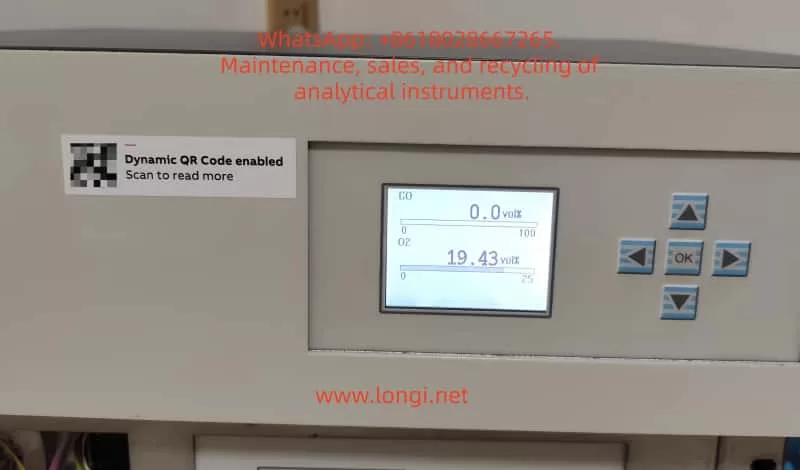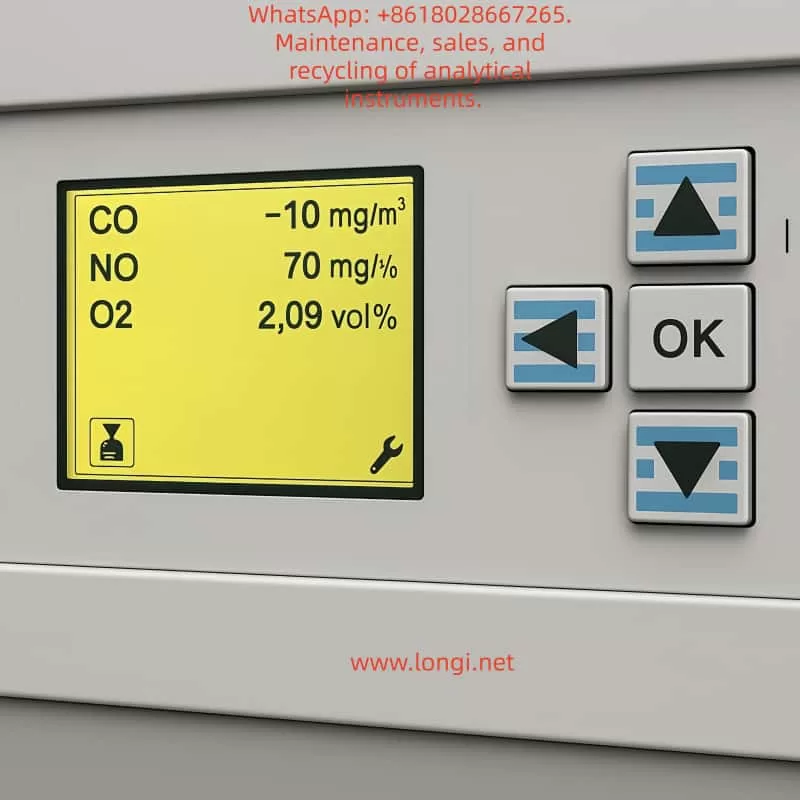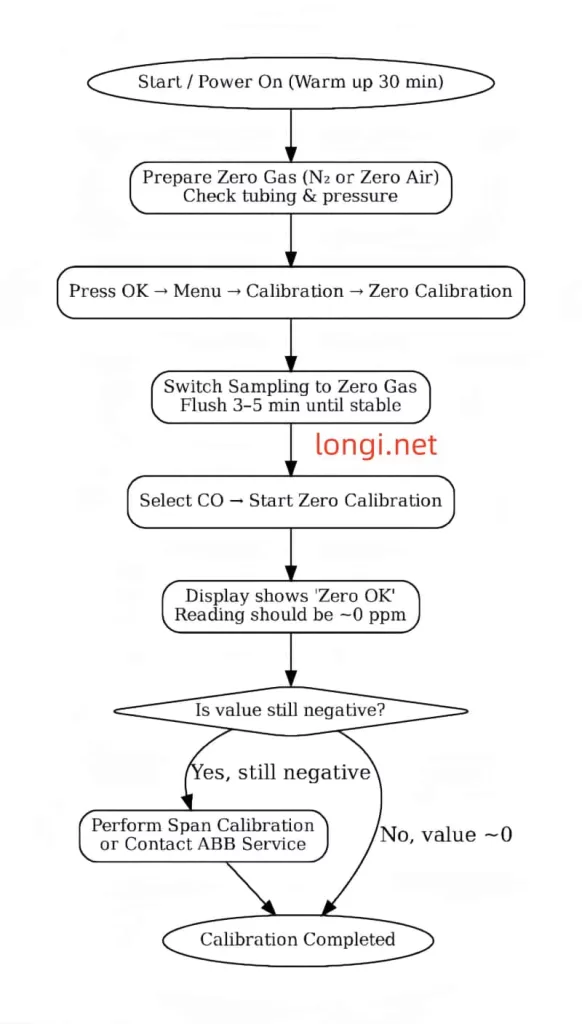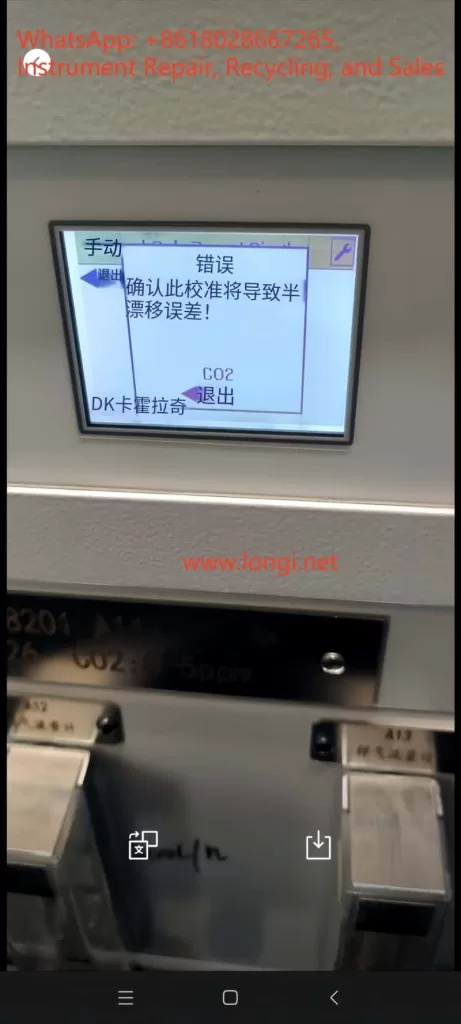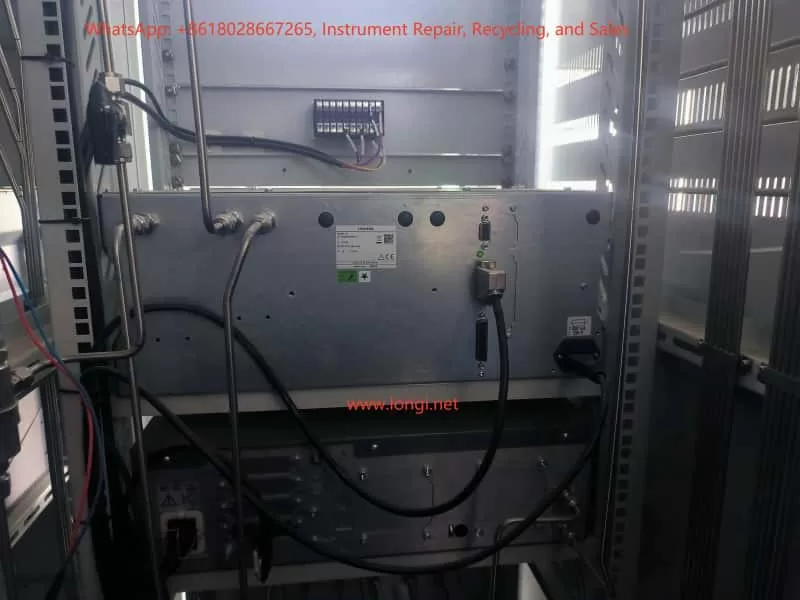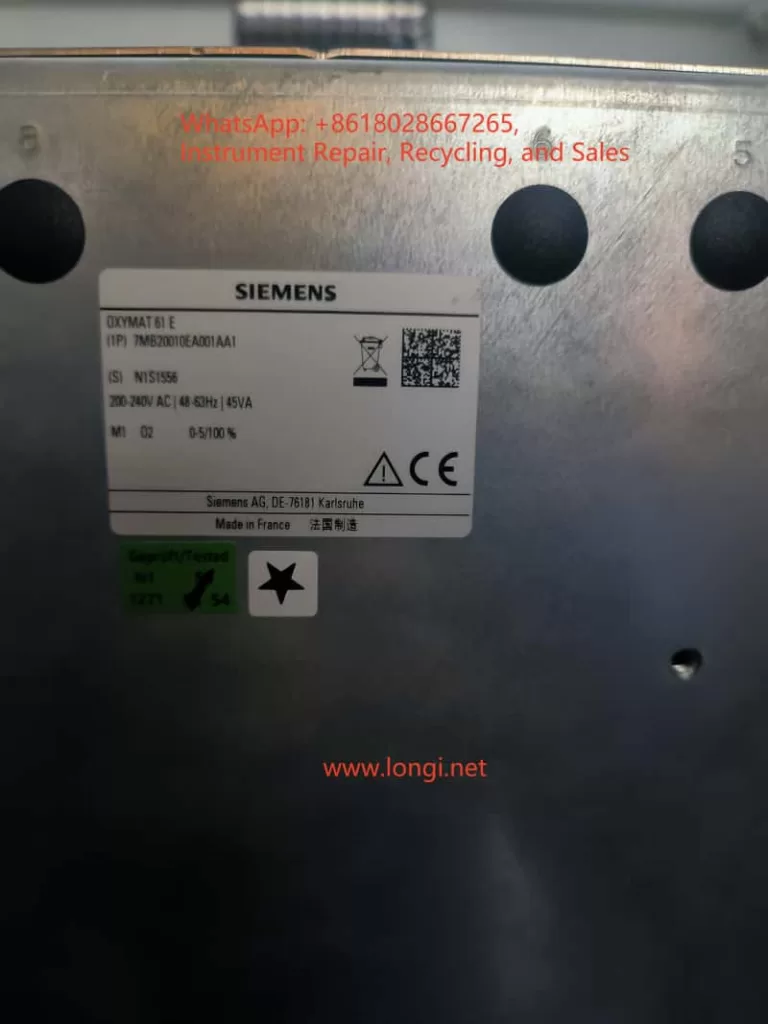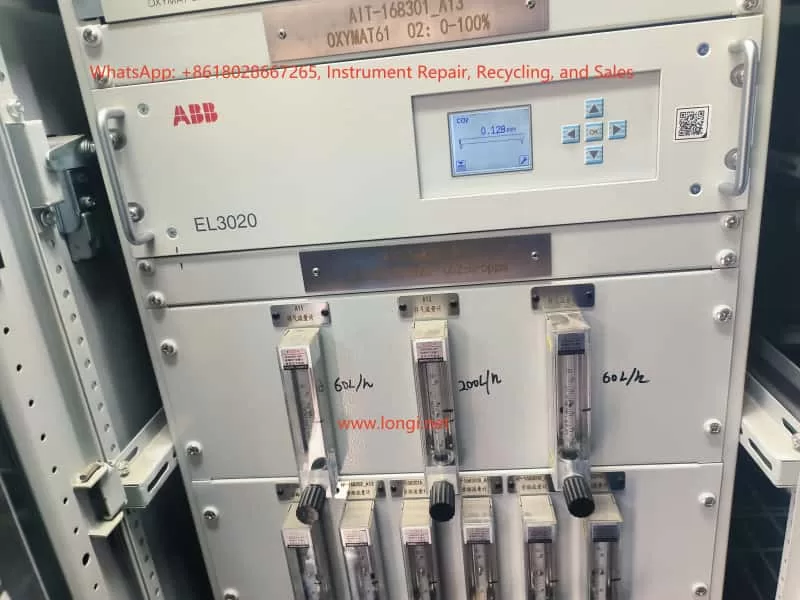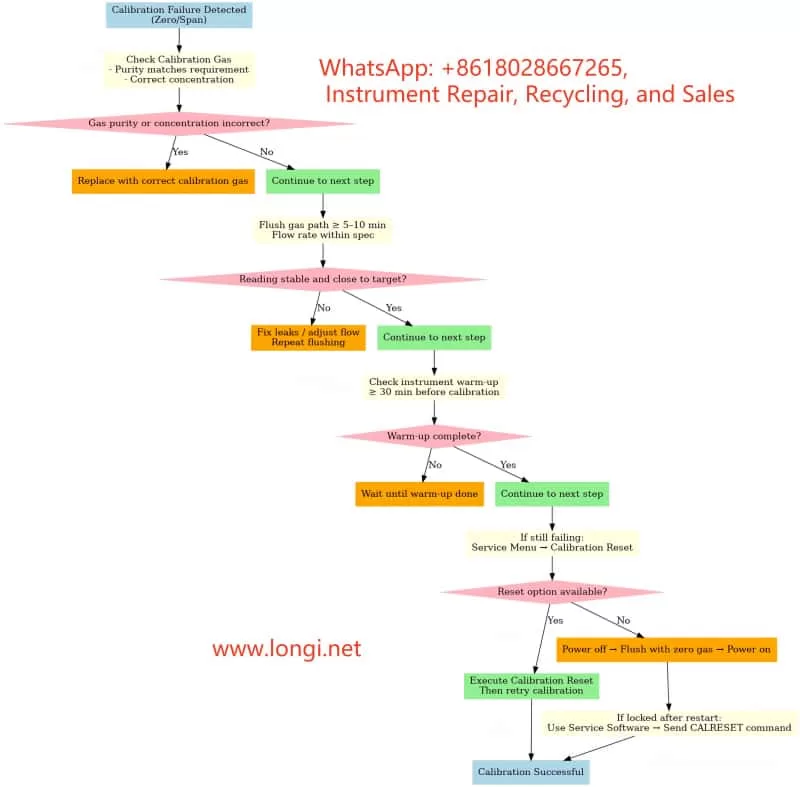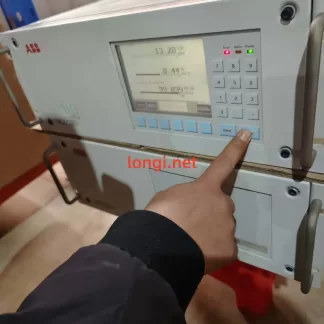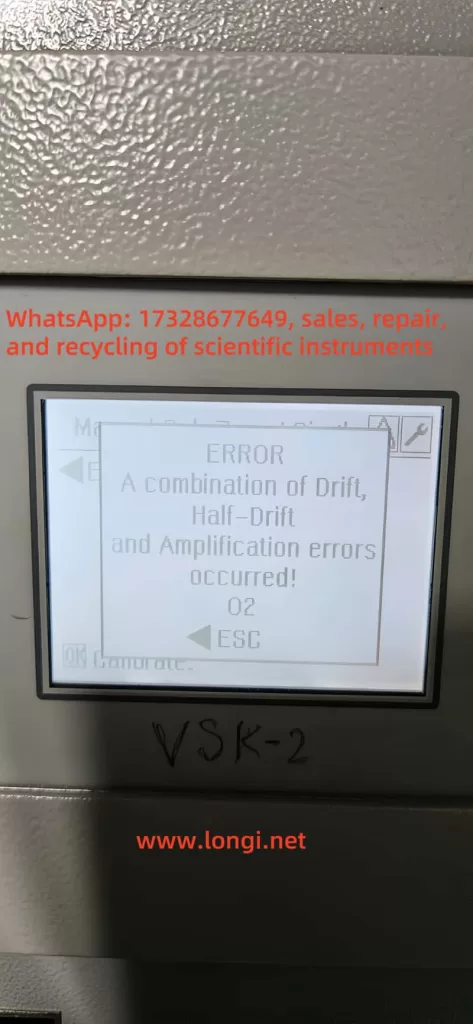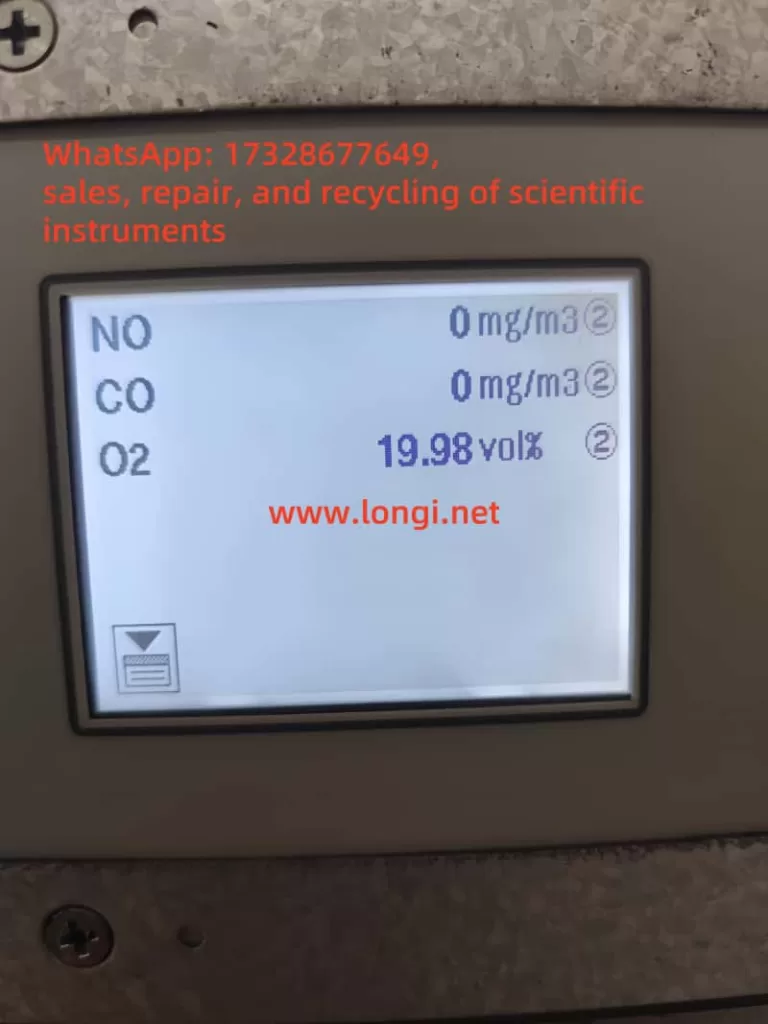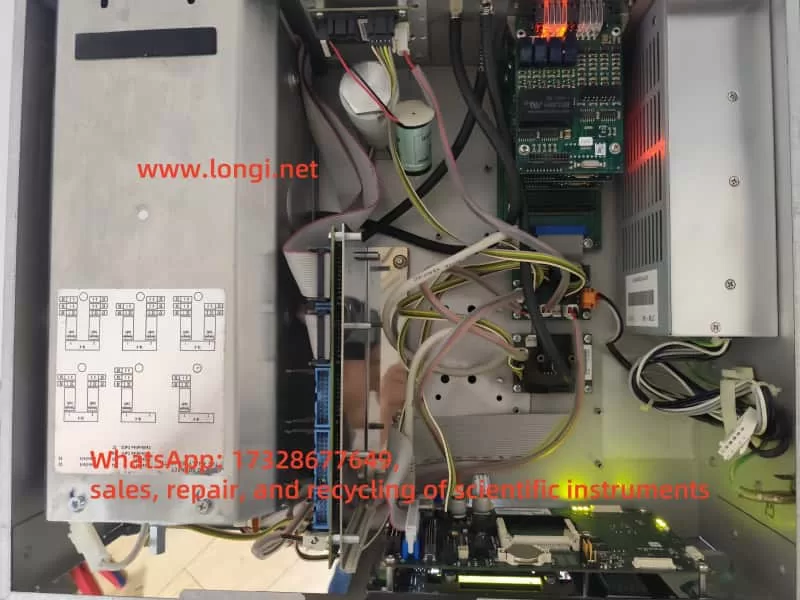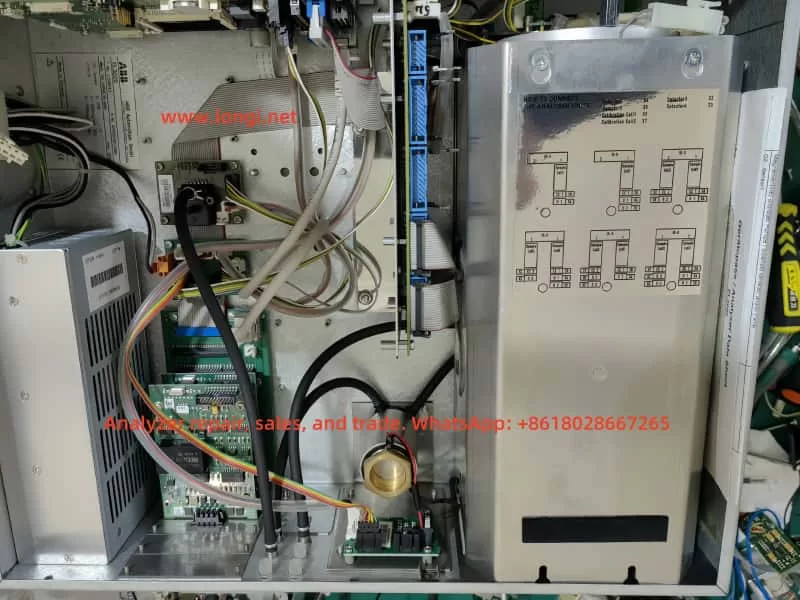1. Introduction
The ABB EL3020 gas analyzer is widely used in industrial flue gas monitoring, combustion optimization, and emission control systems. Known for its accuracy and stability, it is often configured with O₂ sensors and Uras26 infrared modules to measure multiple gas components.
However, during long-term operation, users may encounter the following warning:
30402 – Sensor:02 – Ampl. half
The amplification drift exceeds the HALF value of the permissible range.
This is a typical amplifier drift alarm, indicating that the signal amplification circuit or the sensor itself is drifting beyond the acceptable range. If not addressed promptly, it can degrade measurement accuracy or cause system lockout.
This article provides a comprehensive, technically detailed explanation and solution strategy, including principle analysis, fault causes, diagnostic procedures, corrective actions, and preventive maintenance.
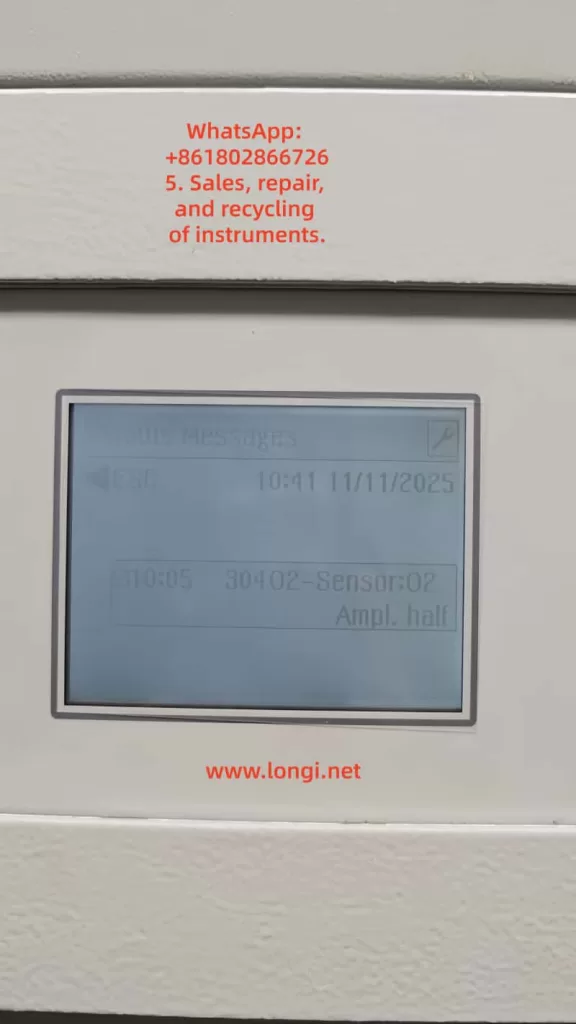
2. System Architecture and Signal Amplification Principle
2.1 System Components
An EL3020 analyzer typically consists of:
- Main Control Unit: Handles signal acquisition, amplification, computation, and display.
- Sensor Unit: Includes O₂ electrochemical or paramagnetic sensors.
- Amplifier and Signal Conditioning Board: Amplifies microvolt/millivolt signals to standard voltage levels.
- Power Supply Module: Provides stable ±15V and +5V power.
- Communication and Display Interface: Connects to DCS/PLC systems.
2.2 Amplification Mechanism
The O₂ sensor outputs a very weak signal (in microvolts or millivolts). The EL3020 uses precision instrumentation amplifiers (e.g., AD620 or OPA227 series) for multiple-stage amplification and temperature compensation.
During startup, the system records a zero reference signal and continuously monitors the amplifier gain.
If the gain drift exceeds half of the permissible range, it triggers the “Ampl. half” alarm.
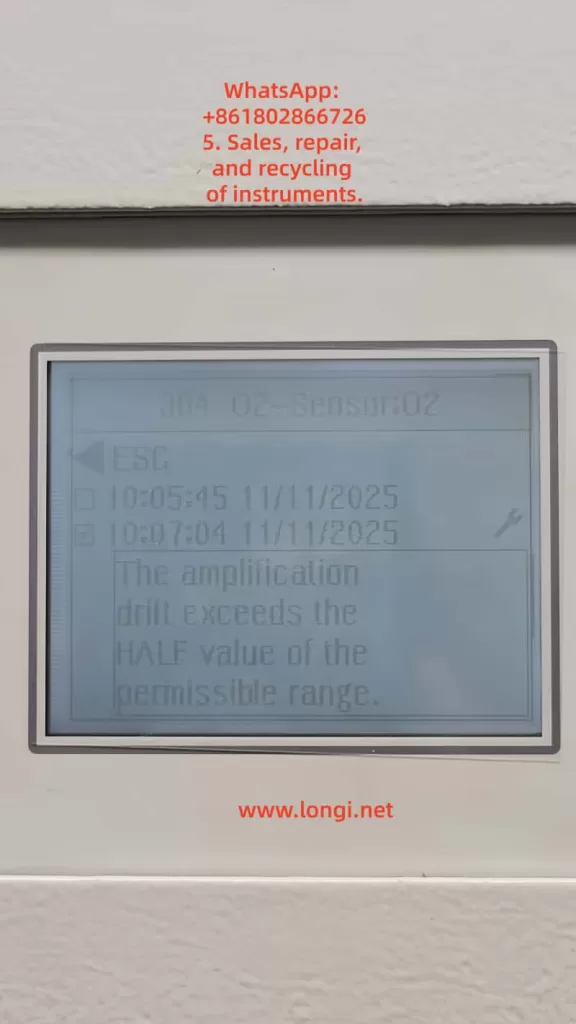
3. Meaning and Logic of Alarm Code 30402
3.1 Definition
| Alarm Code | Description | Severity | Recommended Action |
|---|---|---|---|
| 30402 – Sensor:02 Ampl. half | Amplifier drift exceeds half of the permissible range for Sensor 02 | Warning (non-fatal) | Inspect sensor, recalibrate, or replace amplifier board |
3.2 Trigger Logic
The internal diagnostic continuously compares:
- Current amplification factor (A_meas)
- Reference amplification factor at calibration (A_ref)
- Maximum permissible drift (ΔA_max)
If the condition below is met:
[
|A_{meas} – A_{ref}| > 0.5 \times \Delta A_{max}
]
then the “Ampl. half” warning is triggered.
If it further exceeds 100%, the system raises a “Ampl. full” error, freezing measurement output.
4. Root Cause Analysis
Based on field experience, the “Ampl. half” alarm on ABB EL3020 usually results from one or more of the following issues:
4.1 Sensor Aging or Contamination
- Electrode degradation in electrochemical/paramagnetic O₂ sensors after prolonged use.
- Gas contamination (SO₂, particulates) or membrane aging causing unstable output.
4.2 Amplifier Drift or Component Aging
- Operating in high-temperature environments (>45°C) causes thermal drift in operational amplifiers, resistors, or capacitors.
- Electrolytic capacitors degrade over time, shifting the amplifier’s DC bias.
4.3 Power Supply or Grounding Faults
- Excessive power ripple (>50 mV) on ±15V supply.
- Grounding resistance too high, introducing common-mode noise.
- Aging voltage regulators (7815/7915).
4.4 Calibration Data Deviation
- Outdated zero/span calibration values cause A_ref deviation.
- EEPROM corruption or unexpected software reset.
4.5 Environmental and Gas Conditions
- High humidity (>80% RH) causes condensation inside electronics.
- Acidic or wet sample gas damages sensor stability.
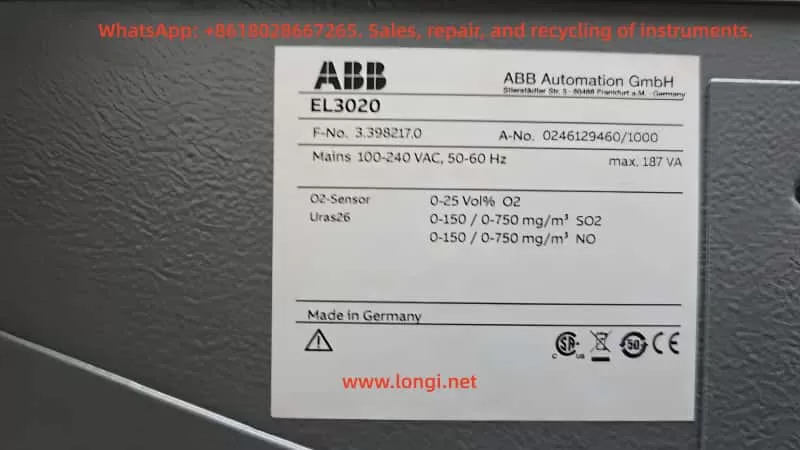
5. Step-by-Step Troubleshooting Procedure
Step 1: Confirm Alarm Status
- Navigate to Status → Messages → 30402 Sensor:02.
- If both “Ampl. half” and “Ampl. full” appear → Stop measurement immediately.
- If only “Ampl. half” → Continue monitoring while preparing for maintenance.
Step 2: Check Signal Trends
- Go to Service → Sensor Diagnostics → Amplifier Value.
- Observe drift tendency; continuous or increasing drift indicates amplifier instability.
Step 3: Measure Amplifier Output
- Disconnect the sensor input and measure amplifier output voltage.
- If voltage drifts >5 mV/min, amplifier board is defective.
Step 4: Recalibrate Analyzer
- Perform Zero Calibration (use pure N₂ or zero gas).
- Perform Span Calibration (use standard 8% O₂/N₂ calibration gas).
- Restart analyzer and confirm if alarm disappears.
Step 5: Check Power Supply and Grounding
- Verify ±15V voltage ripple with an oscilloscope (<30 mV ideal).
- Ensure grounding resistance <1 Ω.
- Add ferrite cores or RC filters on signal lines if noise persists.
Step 6: Replace Defective Components
If alarm persists:
- Replace the O₂ sensor module.
- If no improvement, replace the amplifier board or main control unit.
6. Case Study
Background
A chemical plant used ABB EL3020 for O₂ and SO₂ monitoring in boiler exhaust. After three years, “30402 Ampl. half” warnings became frequent.
On-Site Diagnosis
- O₂ sensor output showed unstable fluctuations.
- Amplifier IC temperature reached 52°C.
- Power supply ripple measured 85 mV (excessive).
Actions Taken
- Replaced aged capacitors on the power board.
- Recalibrated O₂ zero and span points.
- Installed cooling fan near amplifier section.
- Cleaned sensor chamber from dust and moisture.
Result
System stabilized; amplifier drift returned to normal. No alarms after six months of operation.
7. Preventive Maintenance Recommendations
| Task | Interval | Description |
|---|---|---|
| Zero/Span Calibration | Every 3 months | Use certified calibration gases |
| Sensor Cleaning | Every 6 months | Remove dust and moisture; inspect O-rings |
| Power Check | Every 6 months | Verify ±15V ripple <30 mV |
| Cooling Inspection | Annually | Clean air ducts and ensure adequate ventilation |
| Amplifier Verification | Every 2 years | Test amplifier stability; replace if necessary |
Additional recommendations:
- Record Ampl drift trend logs regularly.
- Backup configuration files via ELCom/RS232 interface.
- Avoid prolonged operation in humid or dusty environments.
8. Technical Summary
- Alarm Nature: Amplifier drift beyond calibration threshold, reflecting instability in the signal chain.
- Root Causes: Sensor aging, power instability, amplifier temperature drift, or calibration loss.
- Solution Process: Diagnose systematically—Calibrate → Inspect → Replace → Verify.
- Preventive Focus: Regular calibration, stable power, and environmental control.
- Key Takeaways:
- Repeated “Ampl. half” indicates upcoming failure—prepare spares.
- “Ampl. full” demands immediate shutdown and inspection.
9. Conclusion
The “Amplification drift exceeds half range” warning may appear minor, but it signals a deeper issue in signal stability, thermal management, and calibration integrity within ABB EL3020 analyzers.
For high-precision instruments like these, preventive maintenance is far more effective than corrective repair.
By implementing systematic calibration, routine inspections, and component lifecycle management, operators can ensure long-term accuracy, reliability, and compliance with environmental standards.
Ultimately, maintaining signal stability is not only about the analyzer’s performance—it safeguards the entire process control chain that depends on its data.

